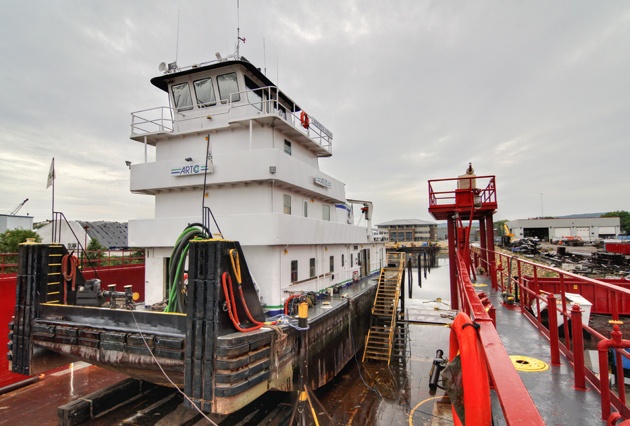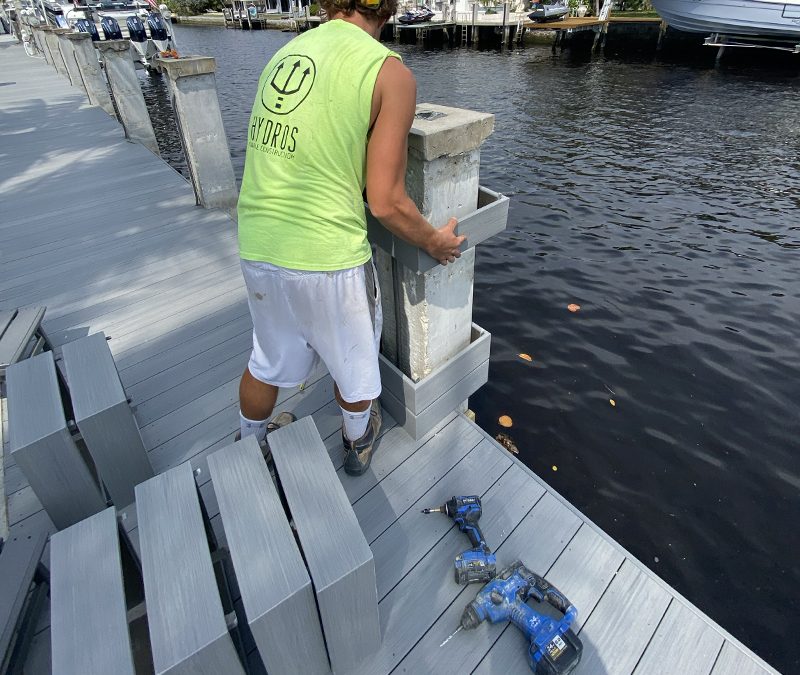Why Routine Upkeep Can Reduce Future Dock Repairs
Why Routine Upkeep Can Reduce Future Dock Repairs
Blog Article
Reliable Dock Repair Work Techniques: Making Sure Structural Honesty
Making certain the architectural integrity of docks through effective repair strategies is critical for the long life and security of aquatic facilities. Consequently, selecting the best repair service products, such as composite materials and corrosion-resistant alloys, is essential for toughness.
Assessing Dock Damages
Evaluating dock damage is an essential very first step in making sure the structural honesty and safety and security of any docking facility. This preliminary evaluation includes an extensive examination to determine both visible and hidden damages. Key facets to analyze consist of the dock's foundation, pilings, decking, and hardware. Each part must be inspected for signs of wear, rot, deterioration, or other kinds of destruction that could jeopardize the architectural honesty.
Architectural designers or qualified examiners usually carry out these assessments using specialized methods and devices. Underwater evaluations could utilize sonar tools or from another location ran vehicles (ROVs) to find submerged damages. Over water, aesthetic assessments are enhanced by utilizing dampness meters and other diagnostic devices to reveal underlying concerns not promptly noticeable to the naked eye.

Finding Repair Service Products
Picking the proper repair work materials is an essential step in the dock remediation process, one that straight influences the durability and performance of the fixed framework. Material selection have to be driven by elements such as environmental problems, load-bearing needs, and compatibility with existing dock elements.
In enhancement to timber, composite materials are significantly preferred due to their sturdiness and low maintenance requirements. Compounds, normally made from a blend of plastic and wood fibers, provide outstanding resistance to rot, insects, and UV damages. For metal docks, choosing corrosion-resistant alloys such as galvanized steel or marine-grade light weight aluminum is vital to prevent rust and ensure structural integrity in saline water conditions.
Epoxy materials and marine-grade sealants are vital for repairing fractures and securing joints, giving a waterproof obstacle and improving the dock's overall toughness. By meticulously picking high-grade products, dock fixings can attain long-lasting results, consequently safeguarding versus future destruction and ensuring safe, trusted use.
Structural Reinforcement Techniques
Effective architectural support techniques are crucial in guaranteeing the security and durability of dock fixings. This approach is especially reliable for docks exposed to hefty tons or severe environmental problems.
One more vital strategy is the application of fiber-reinforced polymers (FRP) These materials offer high strength-to-weight ratios and superb resistance to deterioration, making them ideal for reinforcing wood or concrete anchors. FRP can be applied in sheets or strips and read what he said bound with epoxy materials to boost architectural integrity.
Bracing and securing systems likewise play an important role in architectural reinforcement. Cross-bracing, using steel or wooden beams, can counteract side forces, reducing persuading and movement. Anchoring systems, such as helical piers or driven piles, supply a steady structure by moving loads to much deeper, much more secure dirt layers.
Finally, the integration of load-distribution plates can assist distribute weight much more evenly across the dock's surface area, reducing localized anxiety points. These techniques collectively ensure that docks remain durable and risk-free, efficient in standing up to the rigors of their functional setting.
Advanced Repair Service Methods

An additional sophisticated technique involves undersea welding, which permits repair services to be performed without the need to dewater the area. This method is especially advantageous for dealing with architectural issues in immersed dock elements, making sure minimal disruption to operations. Boosted welding methods, coupled with robotic systems, deliver accuracy and dependability, thus prolonging the lifespan of the dock.
Additionally, cathodic protection systems are carried out to protect against rust in metallic dock frameworks. By utilizing sacrificial anodes or impressed existing systems, these techniques properly reduce the electrochemical procedures that lead to material damage.
Lastly, progressed surveillance technologies, such as architectural health and wellness monitoring (SHM) systems, give real-time information on the condition of dock structures. These systems make it possible for proactive upkeep and prompt treatments, inevitably guaranteeing the long-lasting structural stability of the dock.
Upkeep and Prevention
Upkeep and avoidance are this hyperlink fundamental concepts that underpin the longevity and safety and security of dock structures. Regular assessments are paramount, enabling early discovery of damage, possible weak points, and ecological effects. A positive approach, including regular checks for rust, rot, and architectural shifts, alleviates costly repair work and lengthens the dock's functional life.
Preventive actions should consist of using safety coatings to metal parts to guard against corrosion and making use of treated timber to stand up to decay. Additionally, guaranteeing appropriate drainage and ventilation can stop water buildup, which is a common reason for structural destruction. Including quality materials and sticking to supplier standards throughout construction and repair service stages also play vital functions in enhancing resilience.

Educating workers in dock maintenance finest methods guarantees regular application of preventative actions. Leveraging technical advancements, such as drones for examinations and sensing units for real-time monitoring, can better enhance maintenance initiatives. By prioritizing maintenance and avoidance, dock proprietors can ensure structural honesty, operational safety and security, and cost-effective management over the dock's life-span.
Conclusion
To conclude, preserving the architectural honesty of marine centers requires comprehensive dock repair service techniques. Complete evaluations using innovative devices uncover both visible and concealed damages, while the choice of appropriate repair work products enhances longevity. Implementing architectural support methods addresses stress and anxiety points efficiently. Advanced repair techniques, coupled with normal upkeep practices, make sure click the dock remains risk-free and operational under diverse ecological conditions. Embracing these approaches significantly extends the life-span and capability of marine infrastructure.
Guaranteeing the structural stability of anchors with reliable repair techniques is critical for the durability and security of marine facilities.Selecting the appropriate repair materials is a critical step in the dock restoration process, one that directly affects the long life and efficiency of the fixed structure.Reliable structural support techniques are important in guaranteeing the security and durability of dock repairs. By focusing on maintenance and prevention, dock proprietors can make certain structural stability, operational security, and cost-effective monitoring over the dock's life-span.
In final thought, maintaining the architectural stability of marine facilities demands detailed dock repair work techniques.
Report this page